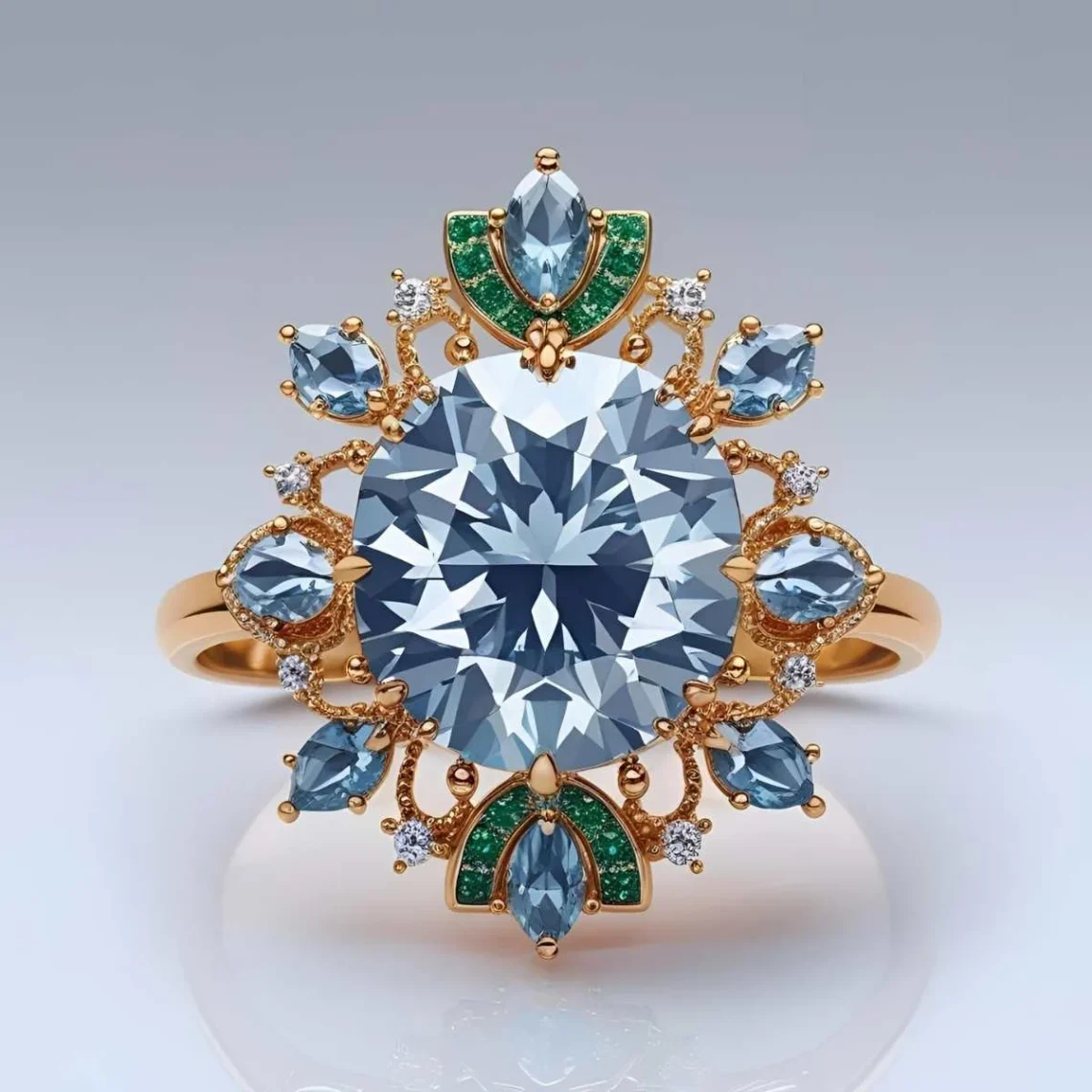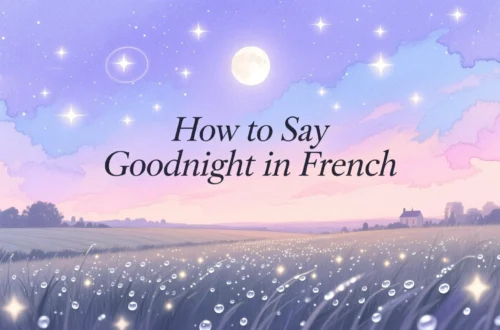Picture a bustling market in Jaipur, where a vendor holds up a sparkling gem, calling it a “ratna” with pride. That single word, “jewel,” evokes images of beauty, value, and rarity across cultures.
Whether it’s a shimmering “gioiello” in an Italian boutique or a treasured “kito” in a Tanzanian village, the term for “jewel” reflects a universal appreciation for precious things, shaped by each culture’s unique perspective.
Let’s embark on a global journey to explore how people express “jewel” in different languages and what these words reveal about their traditions and values.
Reference Table: “Jewel” in Different Languages
| Language | Word/Phrase | Cultural/Linguistic Insight |
|---|---|---|
| French | Bijou | Evokes elegance, often used for delicate jewelry. |
| Spanish | Joya | Suggests something precious, used for gems and treasures. |
| Italian | Gioiello | Implies craftsmanship, linked to Italy’s jewelry heritage. |
| German | Juwel | A term for precious stones, reflecting precision and value. |
| Mandarin | Bǎoshí (宝石) | Means “precious stone,” tied to wealth and status. |
| Hindi | Ratna | Means “gem,” deeply rooted in India’s gemstone culture. |
| Japanese | Hōseki (宝石) | Translates to “precious stone,” symbolizing rarity. |
| Korean | Boseok (보석) | Means “gem,” associated with beauty and value. |
| Arabic | Jawhara (جوهرة) | Means “gem” or “essence,” used poetically across 20+ countries. |
| Swahili | Kito | Means “gem,” linked to East Africa’s mining heritage. |
| Zulu | Igugu | Means “treasure,” reflecting deep cultural value. |
| Yoruba | Okuta | Means “stone,” often tied to spiritual significance. |
| Maori | Taonga | Means “treasure,” used for jewels and cultural heirlooms. |
| Hawaiian | Kāwehi | Means “adornment,” tied to beauty and nature. |
| Cherokee | Adanvdo | Means “heart” or “precious thing,” symbolizing value. |
European Languages: Elegance in Every Gem
European languages express “jewel” with terms that highlight beauty and craftsmanship. For instance, in French, “bijou” conveys elegance, often used for delicate jewelry worn in Parisian salons. Meanwhile, Spanish uses “joya,” a term for precious gems or treasures, heard in Spain’s vibrant markets. Additionally, Italian’s “gioiello” reflects Italy’s rich jewelry-making heritage, evoking images of intricate designs from Florence. In German, “juwel” emphasizes precision and value, fitting Germany’s reputation for quality craftsmanship. Thus, these terms blend artistry and prestige, mirroring Europe’s love for refined beauty and tradition.
Asian Languages: Gems of Cultural Significance
Asia’s diverse languages offer unique terms for “jewel,” often tied to wealth and symbolism. For example, in Mandarin, “bǎoshí” (precious stone) reflects China’s historical association of gems with status and prosperity. In Hindi, “ratna” is deeply rooted in India’s gemstone culture, often linked to astrology and spirituality in places like Jaipur. Similarly, Japanese uses “hōseki” (precious stone), a term that conveys rarity and elegance, often seen in Tokyo’s luxury stores. In Korean, “boseok” (gem) symbolizes beauty, aligning with South Korea’s focus on aesthetics. Finally, Arabic’s “jawhara” (gem or essence), used across over 20 countries like Saudi Arabia and Egypt, carries poetic weight, rooted in the region’s literary traditions. These terms highlight Asia’s blend of material and symbolic value in jewels.
African Languages: Treasures of the Land
In African languages, “jewel” often connects to cultural and natural significance. For instance, Swahili, spoken in over 20 countries like Tanzania and Kenya, uses “kito” (gem), reflecting East Africa’s rich mining heritage, such as tanzanite. In Zulu, “igugu” (treasure) conveys deep value, used in South Africa to describe cherished gems or heirlooms. Similarly, Yoruba’s “okuta” (stone) in Nigeria often carries spiritual meaning, used in rituals or as symbols of wealth. These terms, shared in vibrant markets or ceremonies, emphasize jewels as gifts of the land and culture, celebrated communally.
Indigenous & Island Languages: Treasures of Heritage
Indigenous and island languages express “jewel” with a focus on heritage and beauty. For example, Maori in New Zealand uses “taonga” (treasure), referring to jewels or cultural heirlooms like greenstone pendants. In Hawaiian, “kāwehi” (adornment) ties gems to natural beauty, often used in the context of leis or jewelry. Similarly, Cherokee’s “adanvdo” (heart or precious thing) symbolizes deep value, used in Native American communities for meaningful objects. In Samoan, “mea tāua” (valuable thing) reflects the Pacific’s communal view of treasures, often shared in ceremonies. Across these cultures, from New Zealand to the Cherokee Nation, “jewel” signifies more than beauty—it’s a link to heritage and community.
Cultural Insights: The Evolution of Precious Terms
Words for “jewel” have evolved with cultural values. For instance, in ancient Rome, “gemma” referred to precious stones, symbolizing wealth and power. In Arabic, “jawhara” traces back to medieval poetry, where gems represented divine beauty. Moreover, in African cultures, terms like “kito” reflect mining traditions, while in India, “ratna” is tied to ancient astrological texts. In indigenous cultures, words like “taonga” encompass not just physical jewels but spiritual treasures, passed down through generations. These terms carry histories of trade, art, and belief, uniting cultures through their shared love for beauty.
Proverbs and Sayings: Wisdom of Jewels
- French: “Un bijou brille par son éclat.” (A jewel shines by its sparkle.) – Highlights beauty’s allure.
- Hindi: “Ratna dil mein jagah banata hai.” (A gem makes a place in the heart.) – Ties jewels to emotion.
- Swahili: “Kito ni hazina ya dunia.” (A gem is the earth’s treasure.) – Reflects natural value.
- Japanese: “Hōseki wa kokoro no kagami.” (A jewel is a mirror of the heart.) – Links gems to inner beauty.
- Yoruba: “Okuta ni idi ayọ.” (A stone holds the reason for joy.) – Connects jewels to happiness.
FAQs
Why do some words for “jewel” sound similar?
Shared linguistic roots, like Indo-European terms (French “bijou,” Spanish “joya”), or cultural exchanges, like Arabic’s influence on Swahili, create similarities.
What’s the oldest term for “jewel”?
Latin’s “gemma” (circa 1st century BCE) is among the earliest, used for precious stones and later influencing European languages.
How do cultures shape the term’s use?
In collectivist cultures (e.g., African, Indigenous), “jewel” often symbolizes communal or spiritual value, while individualistic cultures (e.g., European) focus on personal adornment.
Conclusion
From “joya” in Spain to “kito” in Tanzania, the word for “jewel” weaves a global thread of beauty and value. Each term, whether the elegant “bijou” in French or the cherished “taonga” in Maori, reflects cultural traditions while celebrating humanity’s love for the precious. Consequently, these words remind us that jewels, like people, shine brightest in their unique settings. How do you say “jewel” in your language, and what does it mean to you? Share your thoughts below—we’d love to hear your story!





